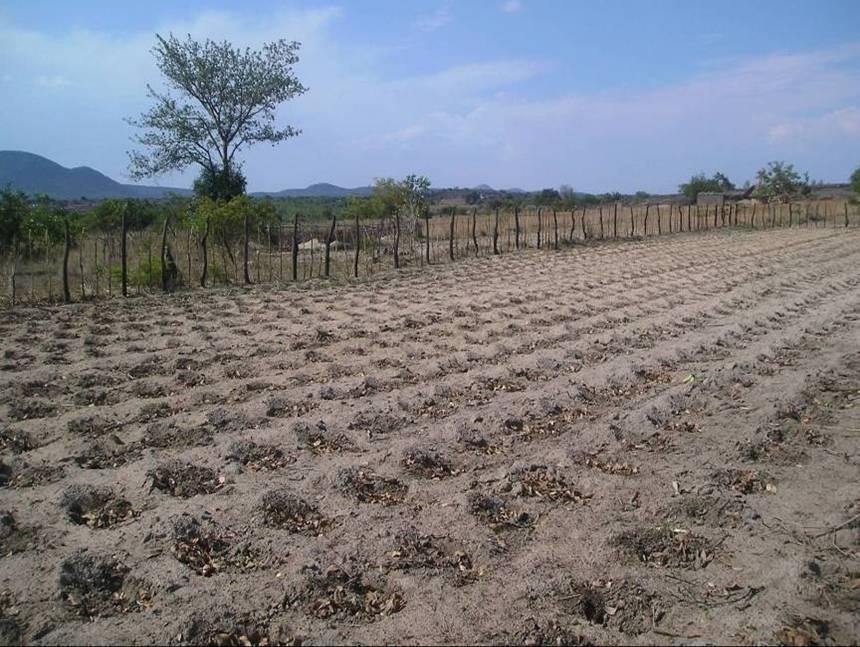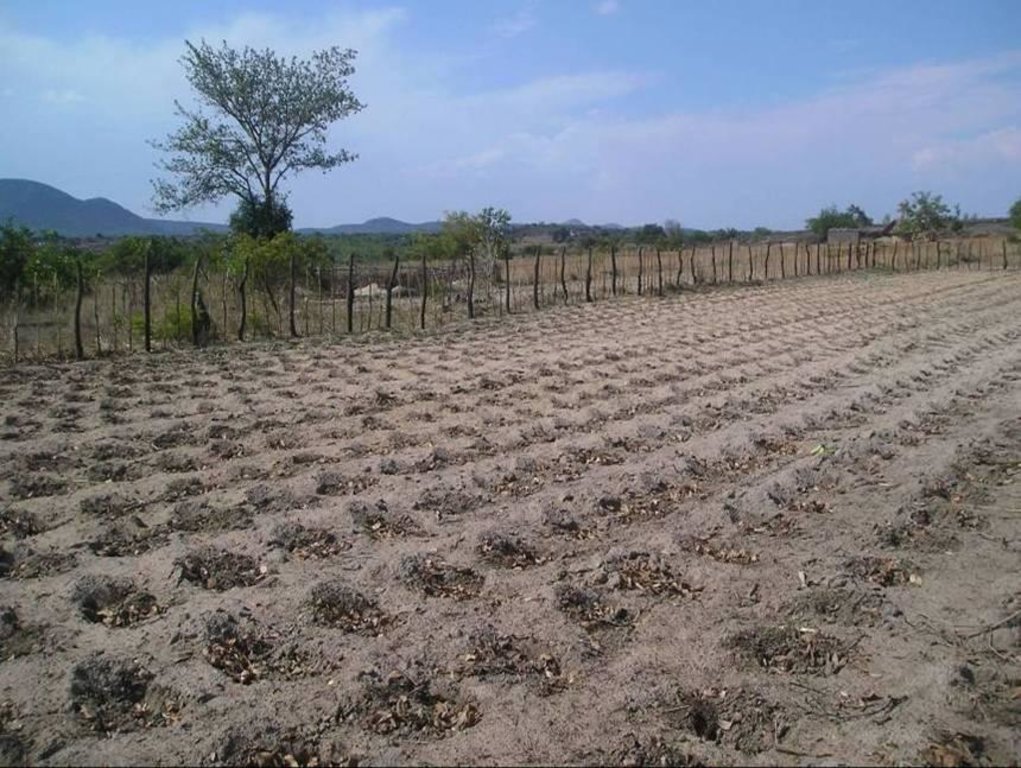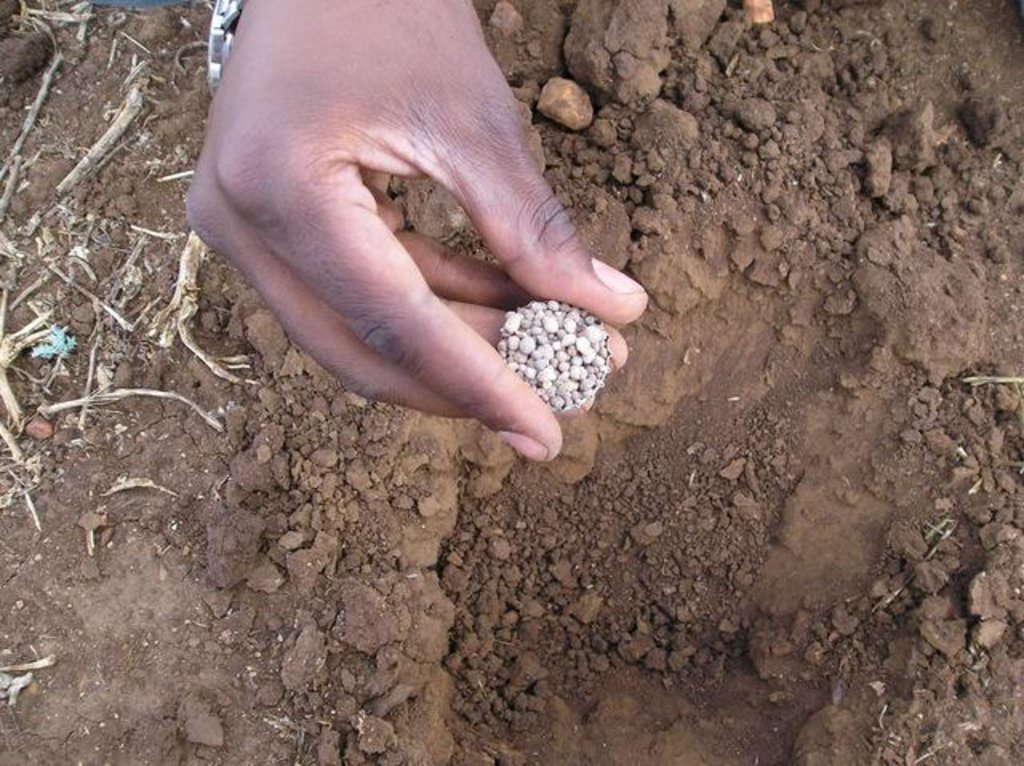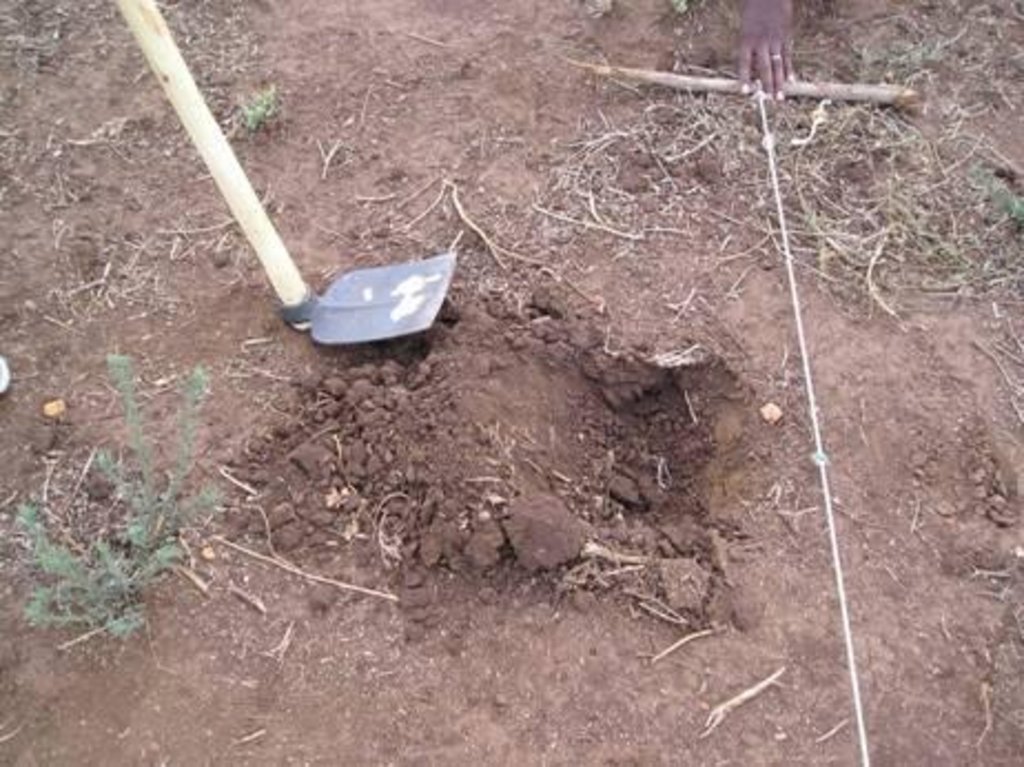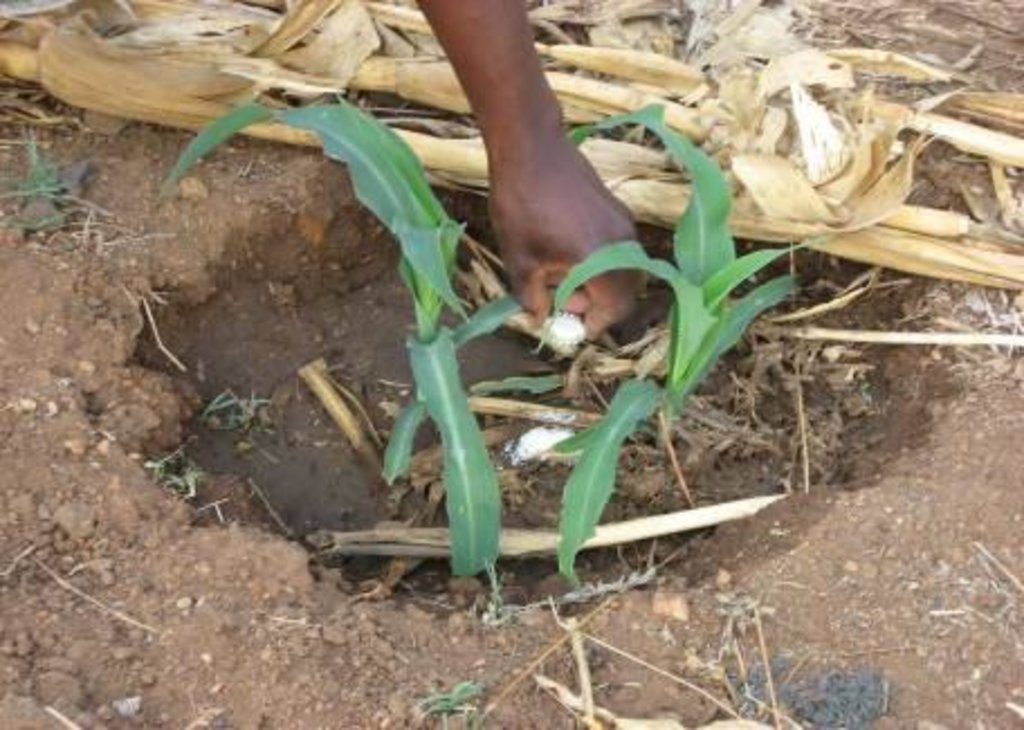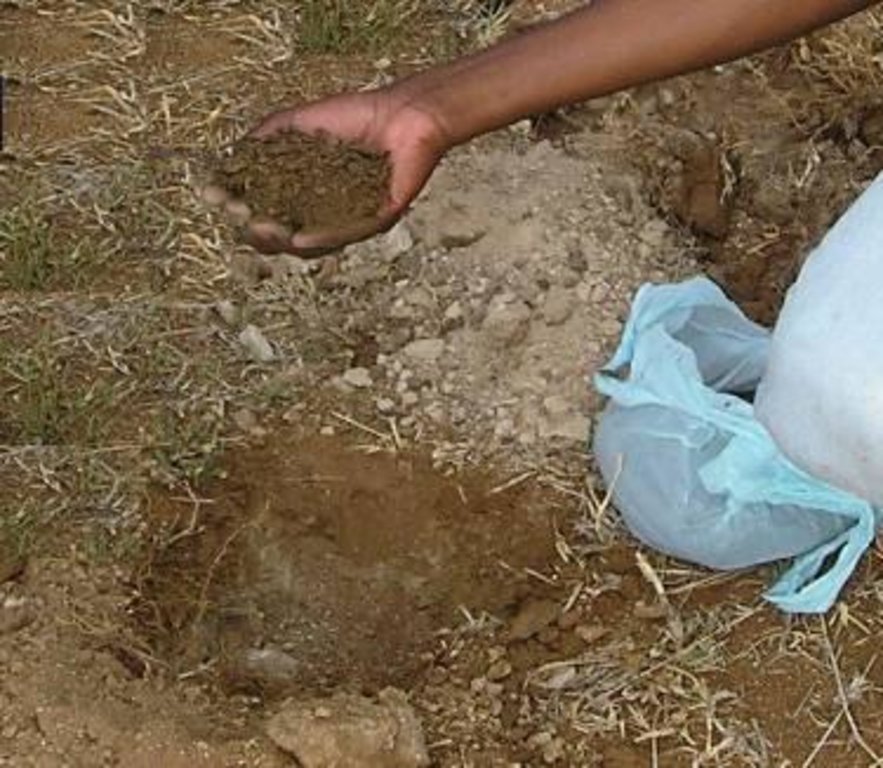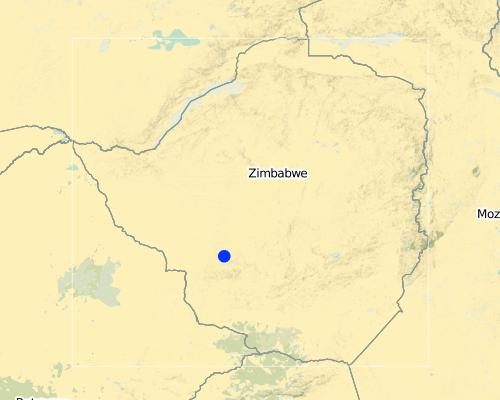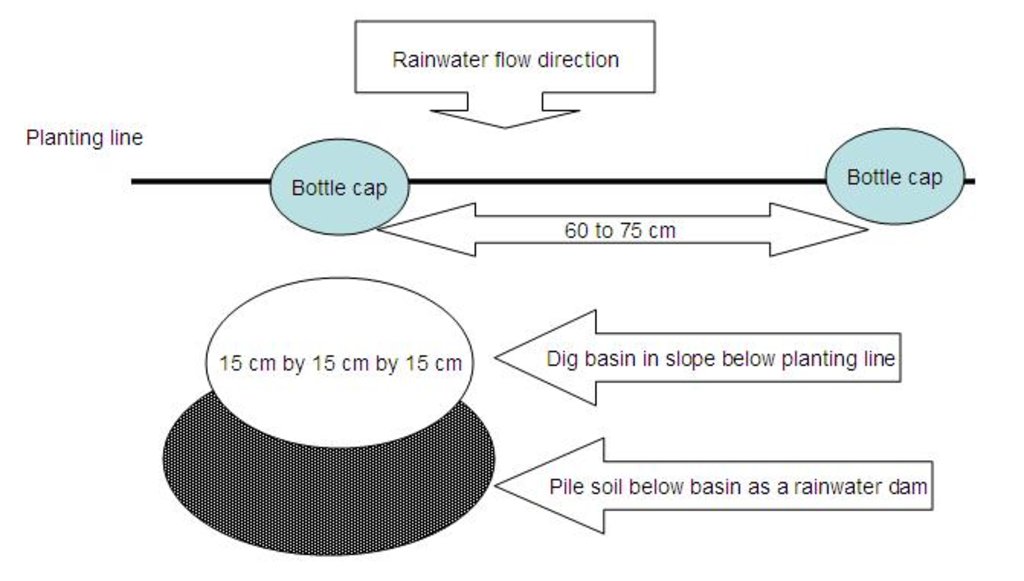Precision Conservation Agriculture [津巴布韦]
- 创建:
- 更新:
- 编制者: Stephen Twomlow
- 编辑者: –
- 审查者: Deborah Niggli
technologies_1327 - 津巴布韦
查看章节
全部展开 全部收起1. 一般信息
1.2 参与该技术评估和文件编制的资源人员和机构的联系方式
有助于对技术进行记录/评估的项目名称(如相关)
Book project: SLM in Practice - Guidelines and Best Practices for Sub-Saharan Africa (SLM in Practice)1.3 关于使用通过WOCAT记录的数据的条件
编制者和关键资源人员接受有关使用通过WOCAT记录数据的条件。:
是
1.4 所述技术的可持续性声明
这里所描述的技术在土地退化方面是否存在问题,导致无法被认为是一种可持续的土地管理技术?:
否
2. SLM技术的说明
2.1 技术简介
技术定义:
Precision Conservation Agriculture combines aspects of conservation agriculture and precision application of fertilizer.
2.2 技术的详细说明
说明:
Precision Conservation Agriculture (PCA) is a combined technology that encompasses four basic principles: 1) minimum tillage – e.g. using planting basins which enhance the capture of water from the first rains and allow efficient application of limited nutrient resources with limited labor input; 2) the precision application of small doses of nitrogen-based fertilizer to achieve higher nutrient efficiency (from organic and/or inorganic sources); 3) combining improved fertility with improved seed for higher productivity; and 4) use of available residues to create a mulch cover that reduces evaporation losses and weed growth. Crop mixes are adapted to the local conditions and household resource constraints. Cereal/legume rotations are desirable. PCA spreads labor for land preparation over the dry seasons and encourages more timely planting, resulting in a reduction of peak labor loads at planting, higher productivity and incomes. Over four years these simple technologies have consistently increased average yields by 50 to 200% in more than 50,000 farm households. These strategies are promoted by ICRISAT, FAO and NGOs in Southern Africa focusing on low potential zones where most of the most resource-poor and vulnerable farm households exist.
Components of CF Planting Basins Package promoted in Zimbabwe:
1. Winter weeding: The first step in preparing a field using CF methods is to remove all weeds. This should be done soon after harvesting in May/June. Weeding is done using implements such as hand hoes and machetes that disturb the soil as little as possible. The importance of weeding before land preparation is to ensure that the plot is weed-free at basin preparation and also to prevent the dispersal of weed seeds.
2. Digging planting basins: Planting basins are holes dug in a weed-free field into which a crop is planted. The basins are prepared in the dry season from July to October. The recommended dimensions of the basin are 15×15×15 cm, spaced at either 75×60 cm for rainfalls of 650 to 900 mm and either 75x75 cm or 90×60 cm for Natural rainfalls of 400 to 650 mm. The basins enable the farmer to plant the crop after the first effective rains when the basins have captured rainwater and drained naturally. Seeds are placed in each basin at the appropriate seeding rate and covered with clod-free soil. The advantage of using basins is that they enhance the capture of water from the first rains of the wet season and enable precision application of both organic and inorganic fertilizer as it is applied directly into the pit and not broadcast.
3. Application of crop residues: Crop residues are applied on the soil surface in the dry season, soon after harvesting if available. Ideally the residues should provide at least 30% soil cover. The mulch buffers the soil against extreme temperatures (thereby reducing soil evaporation), cushions the soil against traffic, and suppresses weeds through shading and improves soil fertility.
4. Application of manure: Fertility amendments are applied soon after land preparation in the dry season. In CF, the application of both organic and inorganic fertilizers is recommended as they complement each other. Organic fertilizers such as manure and/or composts are applied at a rate of at least a handful per planting basin. More can be used in wetter areas.
5. Application of basal fertilizer: Inorganic basal fertilizer is also applied soon after land preparation before the onset of the rains. One level beer bottle cap is applied per planting basin and covered lightly with clod-free soil. This is equivalent to 80 kg of compound fertilizer per hectare. Application rates can be increased in wetter areas and may depend on crop types.
6. Application of topdressing: Nitrogen fertilizer is applied to cereal crops at the 5 to 6 leaf stage soon after the first weeding at a rate of one level beer bottle cap per basin. This is equivalent to 80 kg of ammonium nitrate fertilizer per hectare. Application is done on moist soils. Precision application ensures that the nutrients are available where they are needed. Application rates can be increased in wetter areas and may depend on crop types.
7. Timely weeding: In conventional tillage systems, farmers plough/cultivate repeatedly in order to suppress weeds. With reduced tillage, weeds can be a problem requiring more effort initially. One strategy is to weed in a timely manner (ie, when the weeds are still small) preventing the weeds from setting seed. Timely weeding in combination with mulch should eventually lead to effective weed control.
8. Crop rotation: Rotating crops is one of the key principles of CF. Cereal/legume rotations are desirable because the cereal benefits from nitrogen produced by the Rhizobium associated with the legume, and the legume benefits from the residues produced by the cereal. The advantages of crop rotation include improvement of soil fertility, controlling weeds, pests and diseases, and producing different types of outputs, which reduce the risk of total crop failure in cases of drought and disease outbreaks.
2.3 技术照片
2.5 已应用该技术的、本评估所涵盖的国家/地区/地点
国家:
津巴布韦
有关地点的进一步说明:
Bulawayo
Map
×2.6 实施日期
如果不知道确切的年份,请说明大概的日期:
- 不到10年前(最近)
2.7 技术介绍
详细说明该技术是如何引入的:
- 在实验/研究期间
3. SLM技术的分类
3.1 该技术的主要目的
- 改良生产
3.2 应用该技术的当前土地利用类型

农田
- 一年一作
注释:
Major land use problems (land users’ perception): soil fertility decline and reduced organic matter, soil erosion by water, sealing and crusting
3.4 该技术所属的SLM组
- 土壤肥力综合管理
3.6 包含该技术的可持续土地管理措施

农艺措施
- A1:植被和土壤覆盖层
- A2:有机质/土壤肥力

植物措施
- V5:其它

结构措施
- S11:其它

管理措施
- M1:改变土地使用类型
- M4:活动时间安排的重大变化
3.7 该技术强调的主要土地退化类型

土壤水蚀
- Wt:表土流失/地表侵蚀

化学性土壤退化
- Cn:肥力下降和有机质含量下降(非侵蚀所致)

物理性土壤退化
- Pk:熟化和结壳
注释:
Secondary causes of degradation: soil management
3.8 防止、减少或恢复土地退化
具体数量名该技术与土地退化有关的目标:
- 防止土地退化
- 减少土地退化
4. 技术规范、实施活动、投入和成本
4.1 该技术的技术图纸
4.2 技术规范/技术图纸说明
Vertical interval and spacing between structures / vegetative strips
Date: 1st November 2009
Technical knowledge required for field staff / advisors: high (Change in attitudes)
Technical knowledge required for land users: high (Change in attitudes)
4.4 技术建立活动
| 活动 | 措施类型 | 时间 | |
|---|---|---|---|
| 1. | 1.Layout of contours with the use of an A-frame before land preparation, place wooden pegs along the contours | 植物性的 | during dry season |
4.6 维护/经常性活动
| 活动 | 措施类型 | 时间/频率 | |
|---|---|---|---|
| 1. | Direct seeding /fertilizer (NPK) banding using no-till drill | 农业学的 | Eearly November |
| 2. | Direct seeding /fertilizer (NPK) banding using no-till drill | 农业学的 | Eearly November |
| 3. | Leave fields to fallow for 18 months, apply herbicide if needed | 农业学的 | afther harvest |
| 4. | Leave fields to fallow for 18 months, apply herbicide if needed | 农业学的 | afther harvest |
4.7 维护/经常性活动所需要的费用和投入(每年)
| 对投入进行具体说明 | 单位 | 数量 | 单位成本 | 每项投入的总成本 | 土地使用者承担的成本% | |
|---|---|---|---|---|---|---|
| 劳动力 | labour | ha | 1.0 | 108.0 | 108.0 | |
| 设备 | hand hoes | ha | 1.0 | 7.0 | 7.0 | |
| 肥料和杀菌剂 | fertilizer | ha | 1.0 | 69.0 | 69.0 | |
| 技术维护所需总成本 | 184.0 | |||||
5. 自然和人文环境
5.1 气候
年降雨量
- < 250毫米
- 251-500毫米
- 501-750毫米
- 751-1,000毫米
- 1,001-1,500毫米
- 1,501-2,000毫米
- 2,001-3,000毫米
- 3,001-4,000毫米
- > 4,000毫米
有关降雨的规范/注释:
Summer rains October/November to March 79 to 179 days
农业气候带
- 半干旱
- 干旱
5.2 地形
平均坡度:
- 水平(0-2%)
- 缓降(3-5%)
- 平缓(6-10%)
- 滚坡(11-15%)
- 崎岖(16-30%)
- 陡峭(31-60%)
- 非常陡峭(>60%)
地形:
- 高原/平原
- 山脊
- 山坡
- 山地斜坡
- 麓坡
- 谷底
垂直分布带:
- 0-100 m a.s.l.
- 101-500 m a.s.l.
- 501-1,000 m a.s.l.
- 1,001-1,500 m a.s.l.
- 1,501-2,000 m a.s.l.
- 2,001-2,500 m a.s.l.
- 2,501-3,000 m a.s.l.
- 3,001-4,000 m a.s.l.
- > 4,000 m a.s.l.
5.3 土壤
平均土层深度:
- 非常浅(0-20厘米)
- 浅(21-50厘米)
- 中等深度(51-80厘米)
- 深(81-120厘米)
- 非常深(> 120厘米)
表土有机质:
- 低(<1%)
5.6 应用该技术的土地使用者的特征
生产系统的市场定位:
- 生计(自给)
相对财富水平:
- 贫瘠
- 平均水平
个人或集体:
- 个人/家庭
机械化水平:
- 手工作业
- 畜力牵引
说明土地使用者的其他有关特征:
Land users applying the Technology are mainly common / average land users
Population density: 10-50 persons/km2
5.7 应用该技术的土地使用者拥有或租用的平均土地面积
- < 0.5 公顷
- 0.5-1 公顷
- 1-2 公顷
- 2-5公顷
- 5-15公顷
- 15-50公顷
- 50-100公顷
- 100-500公顷
- 500-1,000公顷
- 1,000-10,000公顷
- > 10,000公顷
这被认为是小规模、中规模还是大规模的(参照当地实际情况)?:
- 小规模的
5.8 土地所有权、土地使用权和水使用权
土地所有权:
- 社区/村庄
6. 影响和结论性说明
6.1 该技术的现场影响
社会经济效应
生产
作物生产
SLM之前的数量:
400 kg/ha
SLM之后的数量:
1520 kg/ha
注释/具体说明:
increase varies between 50-200%, depending on rainfall regime, soil types and fertility, and market access
饲料生产
SLM之前的数量:
600 kg/ha
SLM之后的数量:
2200 kg/ha
饲料质量
生产故障风险
产品多样性
土地管理
收入和成本
农业收入
社会文化影响
食品安全/自给自足
SLM之前的数量:
1.8 ha
SLM之后的数量:
0.6 ha
注释/具体说明:
Household meets food needs from less land
文化机会
社区机构
注释/具体说明:
Community work groups using establishment
SLM/土地退化知识
社会经济弱势群体的情况
生态影响
水循环/径流
水质
注释/具体说明:
Dependent on number adopting in community/catchment
水的回收/收集
地表径流
蒸发
土壤
土壤水分
土壤覆盖层
土壤流失
土壤结壳/密封
土壤压实
养分循环/补给
土壤有机物/地下C
生物多样性:植被、动物
生物量/地上C
有益物种
减少气候和灾害风险
碳和温室气体的排放
6.3 技术对渐变气候以及与气候相关的极端情况/灾害的暴露和敏感性(土地使用者认为的极端情况/灾害)
渐变气候
渐变气候
| 季节 | 气候变化/极端天气的类型 | 该技术是如何应对的? | |
|---|---|---|---|
| 年温度 | 增加 | 好 |
气候有关的极端情况(灾害)
气象灾害
| 该技术是如何应对的? | |
|---|---|
| 局地暴雨 | 未知 |
气候灾害
| 该技术是如何应对的? | |
|---|---|
| 干旱 | 好 |
其他气候相关的后果
其他气候相关的后果
| 该技术是如何应对的? | |
|---|---|
| 缩短生长期 | 好 |
6.4 成本效益分析
技术收益与技术建立成本相比如何(从土地使用者的角度看)?
短期回报:
积极
长期回报:
非常积极
技术收益与技术维护成本/经常性成本相比如何(从土地使用者的角度看)?
短期回报:
积极
长期回报:
非常积极
6.5 技术采用
注释:
50000 land user families have adopted the Technology with external material support
0.3 had under basins in 2008 – so about 15,000 ha across Zimbabwe
There is a strong trend towards spontaneous adoption of the Technology
Over the last 4 years a steady trend in increase in area each household as under basins
6.7 该技术的优点/长处/机会
| 编制者或其他关键资源人员认为的长处/优势/机会 |
|---|
| PCA spreads labour for land preparation over the dry season and encourages more timely planting, resulting in a reduction of peak labour loads at planting, higher productivity and incomes |
| Over four years these simple technologies have consistently increased average yields by 50 to 200%, depending on rainfall regime, soil types and fertility, and market access |
6.8 技术的弱点/缺点/风险及其克服方法
| 编制者或其他关键资源人员认为的弱点/缺点/风险 | 如何克服它们? |
|---|---|
| Availability of residues to achieve the minimum 30% soil cover | Accept that in agro-pastoral systems where residues are at a premium demonstrate benefits of residues management – but allow households to decide |
| Access to fertilizer at cost effective prices | Input market development and identification of enabling government policies |
| Rotations and legumes poorly adopted | Allow households to become familiar with technology and meet subsistence food requirements before promoting rotations. Ensure availability of good quality seeds and markets to meet extra legume production |
7. 参考和链接
7.1 信息的方法/来源
- 实地考察、实地调查
- 与土地使用者的访谈
7.2 参考可用出版物
标题、作者、年份、ISBN:
Hove L, Twomlow S. 2008. Is conservation agriculture an option for vulnerable households in Southern Africa? Paper presented at the Conservation Agriculture for Sustainable Land Management to Improve the Livelihood of People in Dry Areas Workshop, United
可以从哪里获得?成本如何?
ICRISAT web site – www.icrisat.org or FAO
标题、作者、年份、ISBN:
Mazvimavi K, Twomlow S, Belder P, Hove L. 2007. An Assessment of the Sustainable Uptake of CF in Zimbabwe. Global Theme on Agroecosystems Report No 39. ICRISAT, Bulawayo. 69pp.
可以从哪里获得?成本如何?
ICRISAT – www.icrisat.org
标题、作者、年份、ISBN:
Mazvimavi, K., Twomlow, S. Socioeconomic and institutional factors influencing adoption of conservation farming by vulnerable households in Zimbabwe. Agr. Syst. (2009), doi:10.1016/j.agsy.2009.02.002
可以从哪里获得?成本如何?
Elsevier – Agricultural Systems
标题、作者、年份、ISBN:
Twomlow,S., Hove, L., Mupangwa, W., Masikati, P., Mashingaidze,N. 2009. Precision Conservation Agriculture For Vulnerable Farmers In Low-Potential Zones In Humphreys, E. and Bayot, R.S. (Editors). 2009. Increasing the productivity and sustainability of r
可以从哪里获得?成本如何?
xxx
标题、作者、年份、ISBN:
Zimbabwe Conservation Agriculture Task Force, 2009. Farming for the future: A guide to conservation agriculture in Zimbabwe. ISBN 978-07974-3735-7
可以从哪里获得?成本如何?
FAO Emergency Office Zimbabwe Michael.jenrich@fao.org
链接和模块
全部展开 全部收起链接
无链接
模块
无模块


